Nature is always ready to put on a spectacular display somewhere in the world.
And whether it's Japan’s famous cherry blossoms or the turning of the autumn leaves in the USA, people travel thousands of miles to see them.
Here are six annual natural spectacles that people flock to.
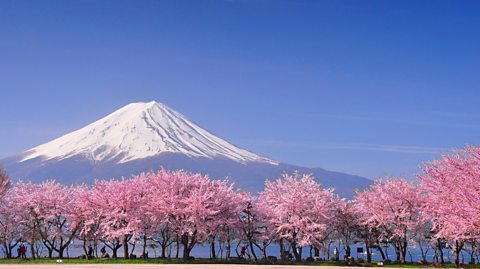
Cherry blossom, Japan
Sakura is the Japanese name for cherry blossoms, and mid-March to mid-April is usually the best time to see the stunning displays for which the country is famed.
The pink blossoms have deep cultural significance for Japanese people, representing both the beauty and fragility of life.
Hanami is the ancient and delightful practice of viewing the blossom, or picnicking under the colour-drenched boughs. Each tree usually blooms for about a week and, as the trees flower at slightly different times in different regions, the entire season lasts about a month.
When it's over, a few of the freshly fallen blossoms are gathered, soaked in salt and transformed into sakurazuke, edible petals.
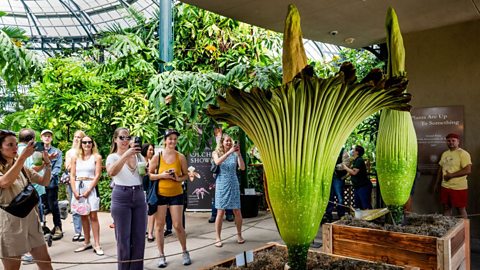
The corpse flower, Sumatra (and in botanical gardens around the world)
Its formal name might be Amorphophallus titanum, but if you get up close as it blossoms you’ll be in no doubt why this rare plant is nicknamed the corpse flower.
“It smells a lot like you saved up your dirty laundry for a couple of weeks. You put it in a garbage bag. You also threw in some dead fish and some rotting hamburgers. And then you put that all by the side of the road somewhere really warm,” said Ari Novy, the president of the San Diego Botanic Garden who are (un)lucky enough to have a specimen.
The awful pong is designed to mimic rotting meat and attract flies to pollinate the flower. The plant, which is endangered in its native Sumatra due to deforestation, flowers irregularly between every two and seven years, and the odour lasts for just a day.
People often visit places like Kew Gardens and San Diego's Botanic Garden to see it.
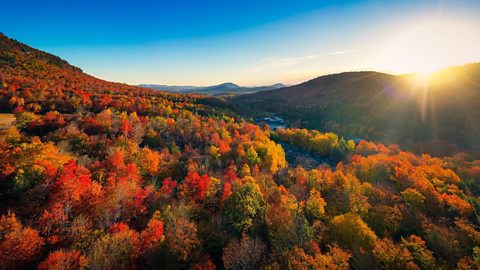
Fall foliage, New England, USA
‘Leaf peepers’ is what Americans and Canadians call the many people who travel to New England, Ontario and other areas to view the spectacular display of foliage as the trees turn an amazing range of different colours in autumn - or fall, as it's called in American English.
But why is autumn so special in that part of the world? Much of it is down to a pigment called anthocyanin, which is produced by some species of Trees that lose their leaves during autumn to prepare for winter. as the leaves begin to turn towards the end of the summer, and which produces bright oranges, purples, reds and browns.
A very high percentage of trees in that region produce anthocyanin, with some sources putting the figure at nearly 70% in New England, hence the incredible display.
But if you want to peep some leaves, plan ahead: local hotels are often fully booked weeks in advance.
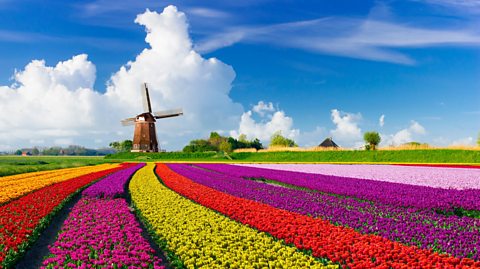
Tulip fields, the Netherlands
It’s difficult to think of a country more associated with a flower than the Netherlands is with tulips. They were introduced to the country in the 16th Century from the Ottoman Empire, and the country's weather turned out to give the colourful bloom a good growing environment.
Today, the Netherlands is the world’s main exporter of tulips and tulip bulbs, exporting 2 billion every year. April to mid-May is the flowering season, and people come from all over the world to see and photograph the tulip fields.
There is also a famous 26-mile (42km) annual flower parade featuring spectacular floats, the Bloemencorso Bollenstreek, in April.
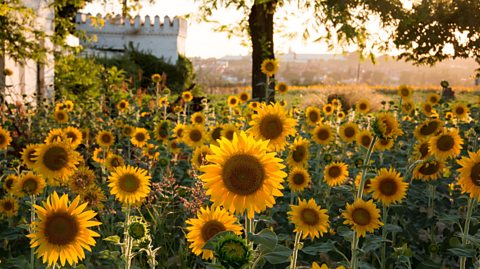
Sunflowers, Andalusia, Spain
Sunflowers originally come from North America, where they were cultivated by indigenous people for their oil and their seeds, which were ground into flour. They were introduced into Europe by the Spanish in the 16th Century, so it’s not a coincidence that some of the most spectacular sunflower displays are in Spain.
The best time to see the bright yellow fields is in late spring and early summer. There are sunflower farms all over southern Spain, but the Andalusia region is particularly famous for them drawing tourists from all over the world.
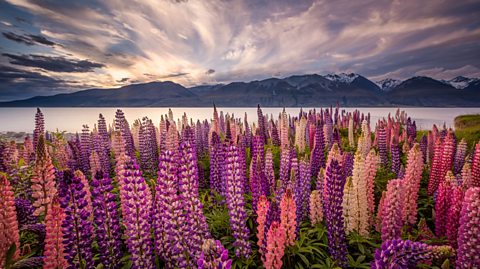
Lupins, South Island, New Zealand
Every November the centre of New Zealand’s South Island is carpeted with purple, blue and pink lupins. The displays are particularly stunning around the shores of Lake Tekapo and tourists flock to see them.
But the beautiful displays hide a slightly worrying secret. The Russell Lupin (Lupinus polyphyllus) that grows all over the island is a non-native, invasive plant. It’s originally from North America, and was introduced in the 1940s as a garden flower.
Lupins are deep-rooted, their seeds spread far and wide, they drive out local wildlife, clog waterways and have even caused accidents when motorists stop to admire them.
This article was published in March 2024
Are these the most mesmerising gardens in the world?
Take a journey across the world to explore some of the most mind-blowing gardens.
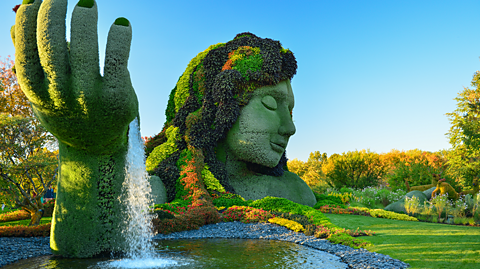
Amazing UK wildlife that will take your breath away
From black foxes to pink moths, ≥…»ÀøÏ ÷ Bitesize takes a look at the wild and wonderful creatures of the UK.
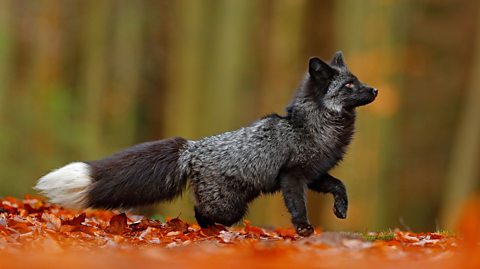
Three 'immortal' creatures that have fascinated scientists for decades
These animals seem to have cracked the code to stop, or even revert, ageing.
